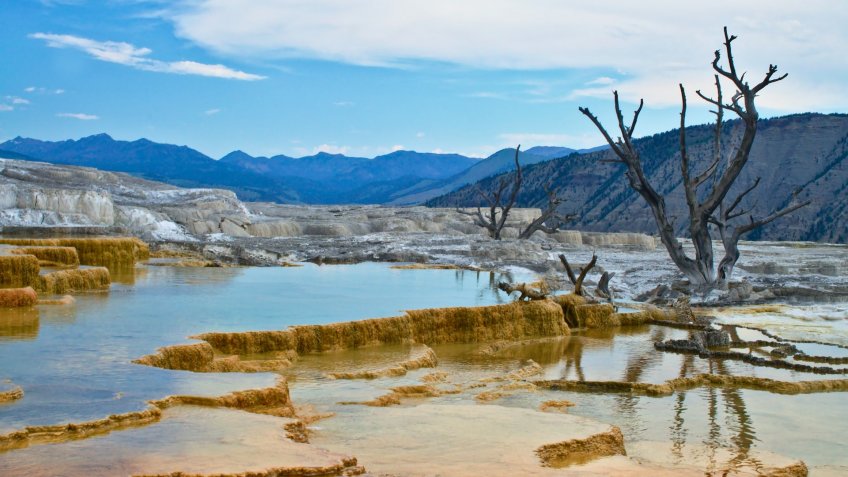
On May 3, 1924, Soviet scientist Alexander Oparin reported to the Russian Botanical Society his theory of the origin of life on Earth. The essence of his hypothesis is the chemical transformation of non-living matter into organic matter. The so-called primary broth.
In the same year Vladimir Obruchev wrote his science fiction novel "Sannikov Land" about an amazing natural oasis with the climate of southern Siberia far beyond the Arctic Circle - in a volcano caldera on a small island in the Arctic Ocean. The basis of this "incubator" of life, according to the writer was geysers.
Almost a hundred years after the two events described, scientists at the University of South Wales (Sydney) have discovered in the sediments of hot springs in Western Australia, the oldest traces of life on our planet. Geyserite or siliceous sinter rock was the reservoir for the primary broth 3.48 billion years ago. With their discovery, Australians have pushed back the time threshold for the emergence of microbial life from inorganic carbonaceous compounds by 580 million years.
This is how Obruchev described the unexpected meeting of the novel's characters with a geyserite:
"Having passed the meadow, the travelers were convinced that the hill was towering among a small lake, so that the assumption that it was an ice or a snowdrift fell away. Up close, the hill was seen as a series of rises upon one another. With binoculars they could see that water was trickling down the hills. (...)
That's a geyser, a hot intermittent spring, as you often see in volcanic areas of the Earth," said Ordin. - You're right, and the hill is a deposit of siliceous tuff, precipitated from ejected water as it flows down the ledges.
In about the same way soup "escapes" from the pot of a hapless cook. Comparison of the rock with kitchen utensils is also justified in terms of the internal composition of geyserite - there is also living in non-living. It is a porous substance, which is more than half of a symbiosis of various organisms, such as blue-green algae. It can only exist in active hydrothermal systems. When they stop their activity, when there is no longer any supply from the underground water, the stone begins to degrade.
Even in the origin of geyserite the mineral and organic components are closely intertwined. The rock is based on opal or silica, but scientists have found fossils, i.e. fossilized remains of organisms. There is also a combination of both.
The world's first natural park - Yellowstone, in the U.S. is the same caldera as that of Obruchev. Only much further south, at the latitude of Derbent and Vladivostok. Unlike the island from "Sannikov Land," this piece of land has never been cut off from civilization. Even 11,000 years ago, Native North Americans took a fancy to the territory of the future park as an ideal place for hunting, fishing and mining obsidian, which was used to make cutting tools and weapons. Hot springs were used for bathing and cooking. However, signs of volcanic activity - steam and specific sounds - were perceived as signals from on high. Everything is like the inhabitants of "Sannikov Land."
By the time the act creating the national park was signed in 1872, the Indian tribes had been almost completely displaced from the unique territory. Formally they had only the right to hunt, but even that was being violated in practice. After about 10 years there was a railroad, and the tourist pilgrimage began.
By the time Obruchev wrote his famous novel, annual attendance at Yellowstone Park exceeded 100,000 people. Today it steadily exceeds 3-4 million. People almost instinctively gravitate to such places, where the primary broth of earthly life was once "boiled". Petersburgers do not need to cross the ocean to get acquainted with a sample of American geyserite. Stone from Yellowstone Park is in the exposition of the Mining Museum.


